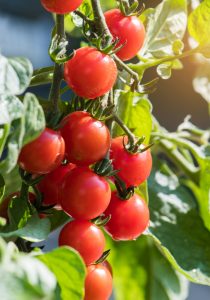In the Garden Blog
Cincinnati's Garden Blog "In the Garden"
Top Vegetable Gardening Questions for Cincinnati Gardeners

Top Vegetable Gardening Questions for Cincinnati Gardeners
Cincinnati gardeners love growing their food, and with various climates and seasons, there’s plenty to cultivate all year. Here are some of the top questions gardeners ask about Cincinnati vegetable gardening and a few tips to help your garden thrive.
1. What Vegetables Can You Plant in Cincinnati in Early Spring?
Cincinnati’s soil should be workable for early spring planting with temperatures above 45-50°F. Cold-tolerant veggies thrive in these conditions, and some great options include:
- Kalettes, Kale, Cabbage, Collards, Peas, Onions, Potatoes, Spinach, Lettuce, Radishes, and Carrots
- For a unique twist, try the Kosmic Kale—it’s both tasty and visually striking!
2. Which Tomatoes Are Best for Sauces and Paste?
Classic varieties like Roma and San Marzano are excellent choices for making sauces. Roma tomatoes offer a reliable flavor profile, while San Marzano tomatoes have become a popular choice for home cooks and chefs alike. Check out Natorp’s Tomato Collection for even more options.
3. Which Basil Varieties Work Well in Containers?
All basil varieties thrive in containers, but Green Bouquet and dwarf varieties are ideal for small spaces. These compact plants only reach 15-18 inches, have small leaves (no excessive chopping required!), and pack an intense flavor punch.
4. Should I Use Epsom Salt on My Tomatoes and Peppers?
Epsom Salt, or magnesium sulfate, is famous for tomato and pepper plants. Here are some methods:
- Add 1-2 tablespoons in the planting hole or use it as a foliar spray (1 tablespoon per gallon of water) a few times a season.
- Though opinions vary, moderation is key—if it works for your garden, keep using it!
5. How Often Should You Feed Tomatoes in Containers?
- Osmocote for steady, light feeding throughout the season
- Espoma’s Tomato Tone at planting and again after fruit sets
- Consider a quick boost of Miracle-Gro if plants look discolored.
Adding a calcium source can help prevent blossom-end rot.
6. What Are the Little Black Bugs on My Potatoes?
These are likely flea beetles, which commonly infest many vegetable plants. Dusting with diatomaceous earth can help, or apply Eight Insecticide, making sure to treat both sides of the leaves.
7. How Deep Should You Plant Tomatoes?
Plant tomatoes deeply to promote strong roots:
- Bury half to two-thirds of the plant below ground, including the root ball. This gives tomatoes a sturdier foundation and extra roots.
8. Do You Grow Grafted Tomatoes?
Yes! Grafted varieties like Brandywine Pink, Cherokee Purple, and the fun Ketchup n’ Fries (tomatoes on top, potatoes below) are ideal for containers and provide a unique growing experience.
9. What Should I Spray for Peach Leaf Curl?
Peach leaf curl must be tackled in the offseason. After 90% of the leaves have fallen in the fall, spray with Mancozeb, Fungonil, or Copper again in early spring as buds swell.
10. Can You Grow Figs in Cincinnati?
Yes, you can! While figs aren’t traditionally hardy here, the Chicago Hardy Fig is an exception. For more common varieties, try growing them in containers and overwintering them in an unheated garage. With proper placement and winter protection, figs can also survive outdoors.
11. How Late Can You Plant a Vegetable Garden Cincinnati?
With Cincinnati’s first frost typically around mid-October, timing is crucial:
- Warm-season crops (tomatoes, peppers, cucumbers) can be planted until the end of June or early July.
- For fall harvests, cole crops (cabbage, kale, broccoli) thrive in the cooler temperatures from late July to August.